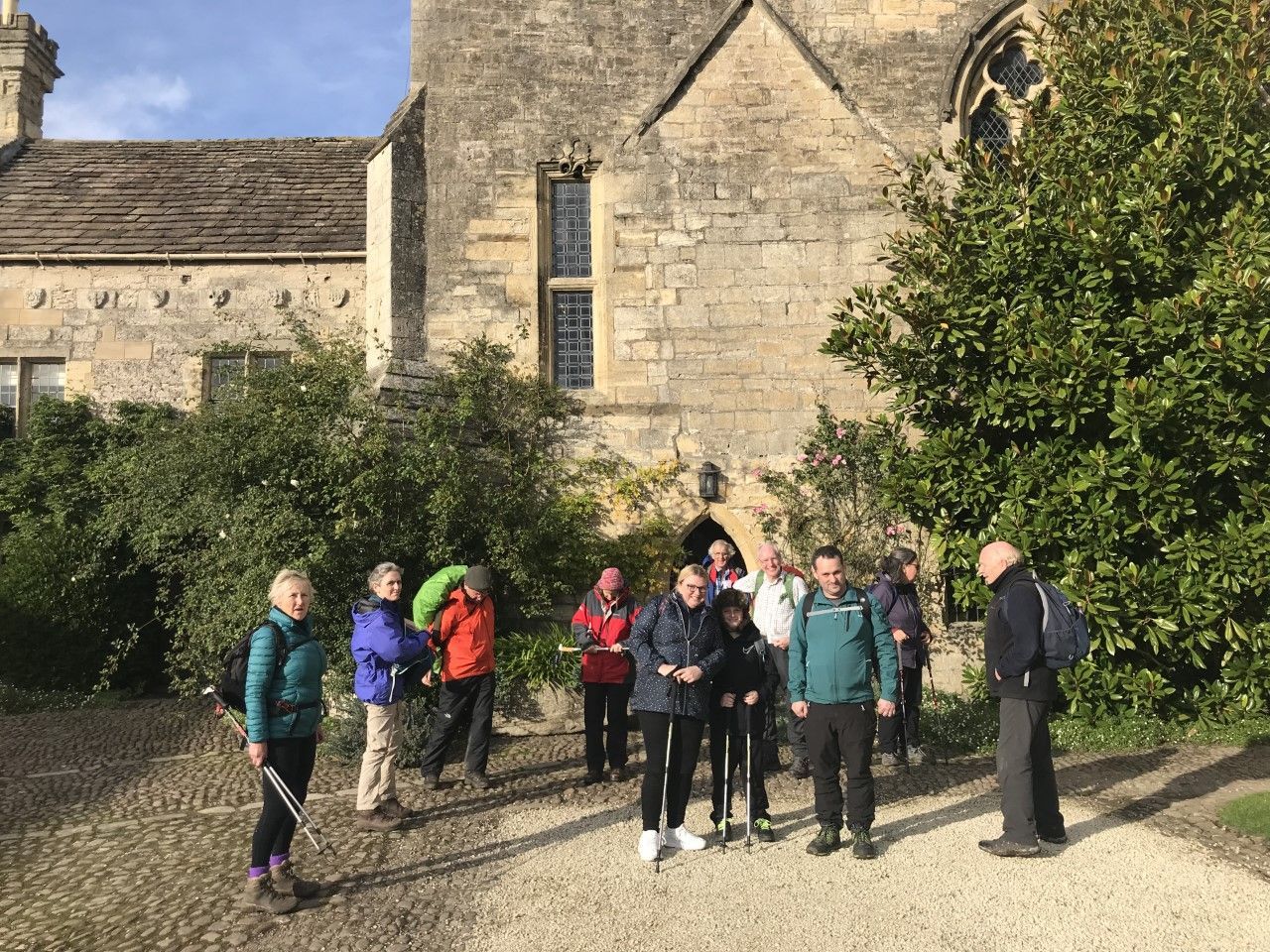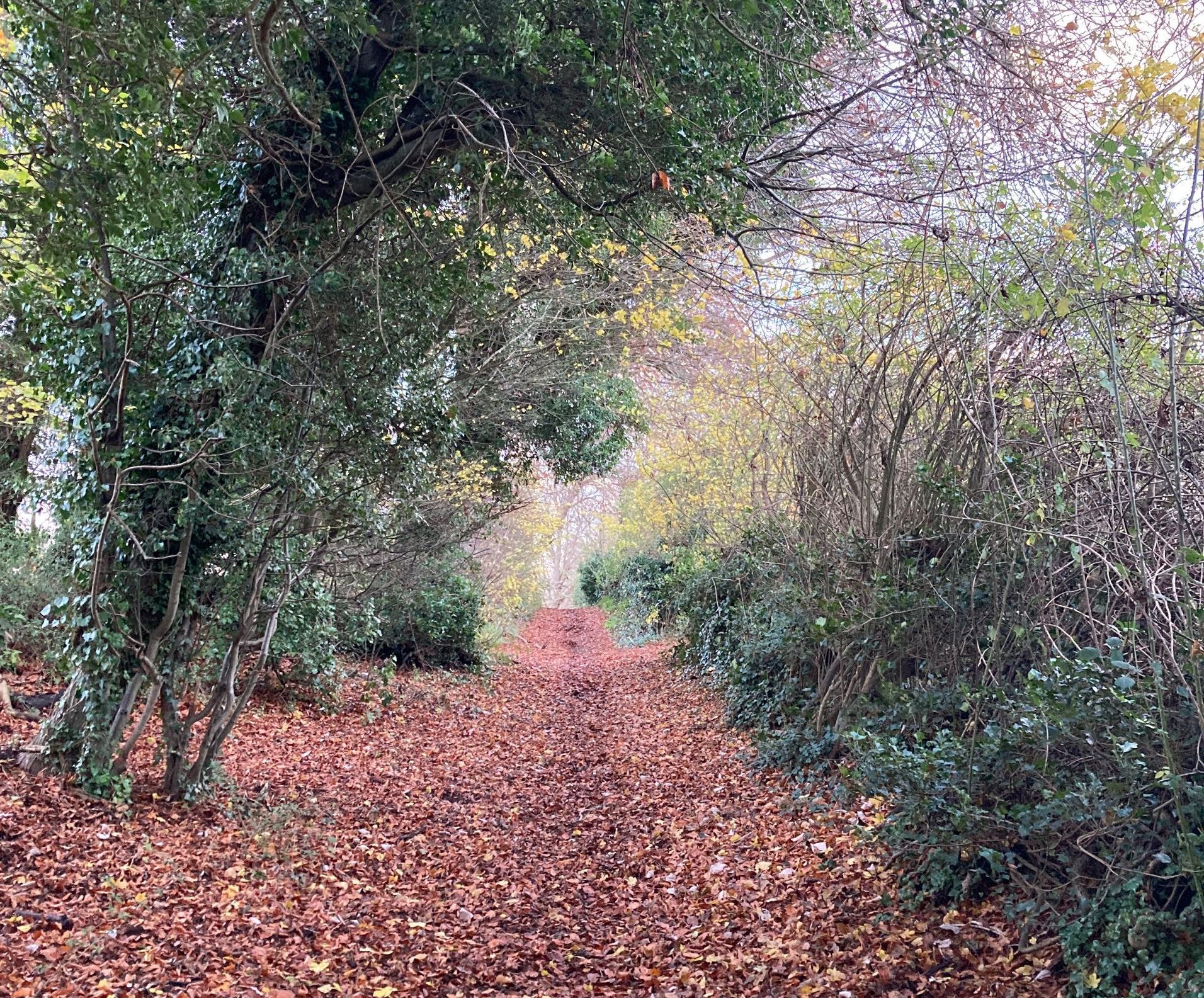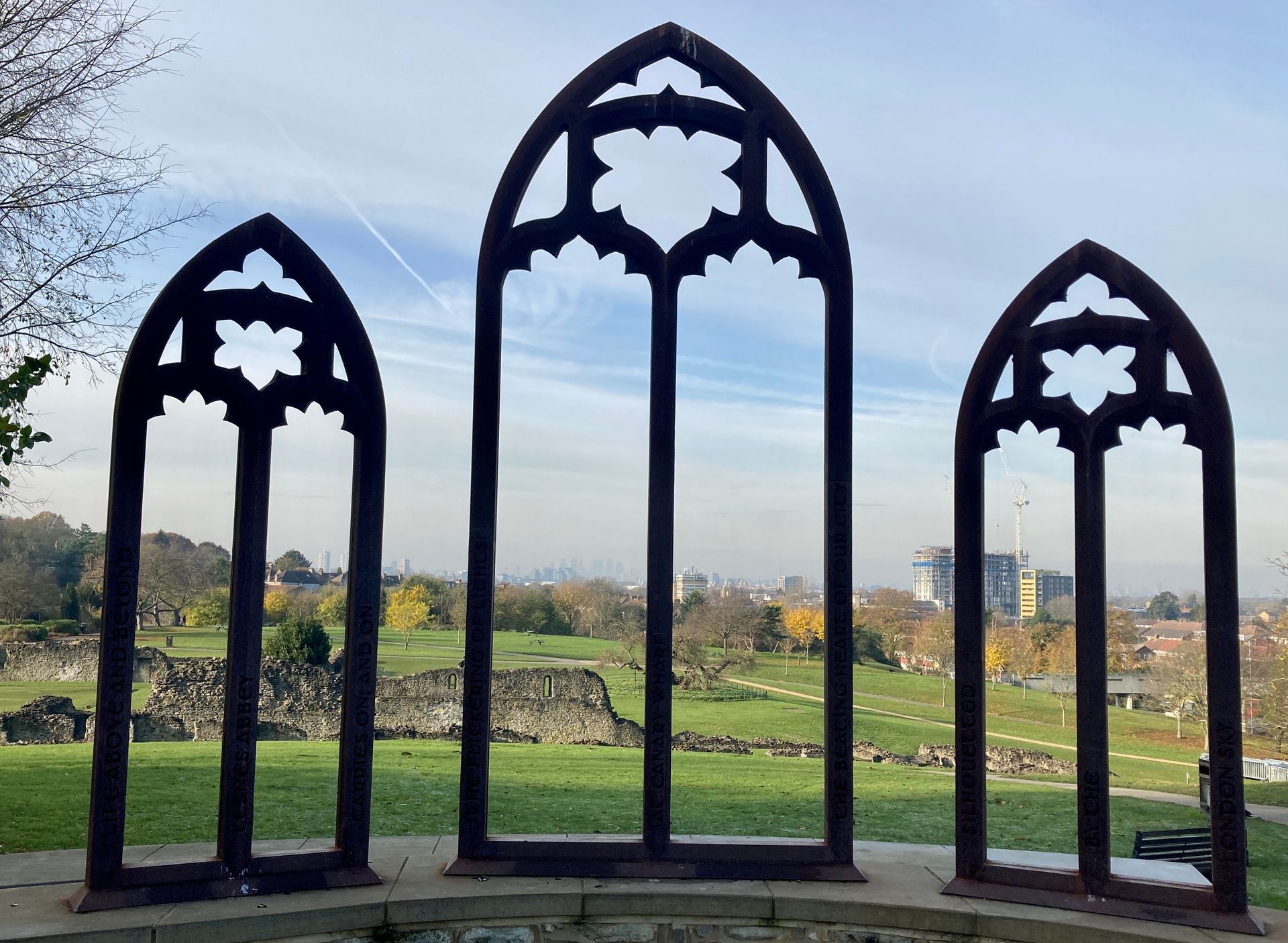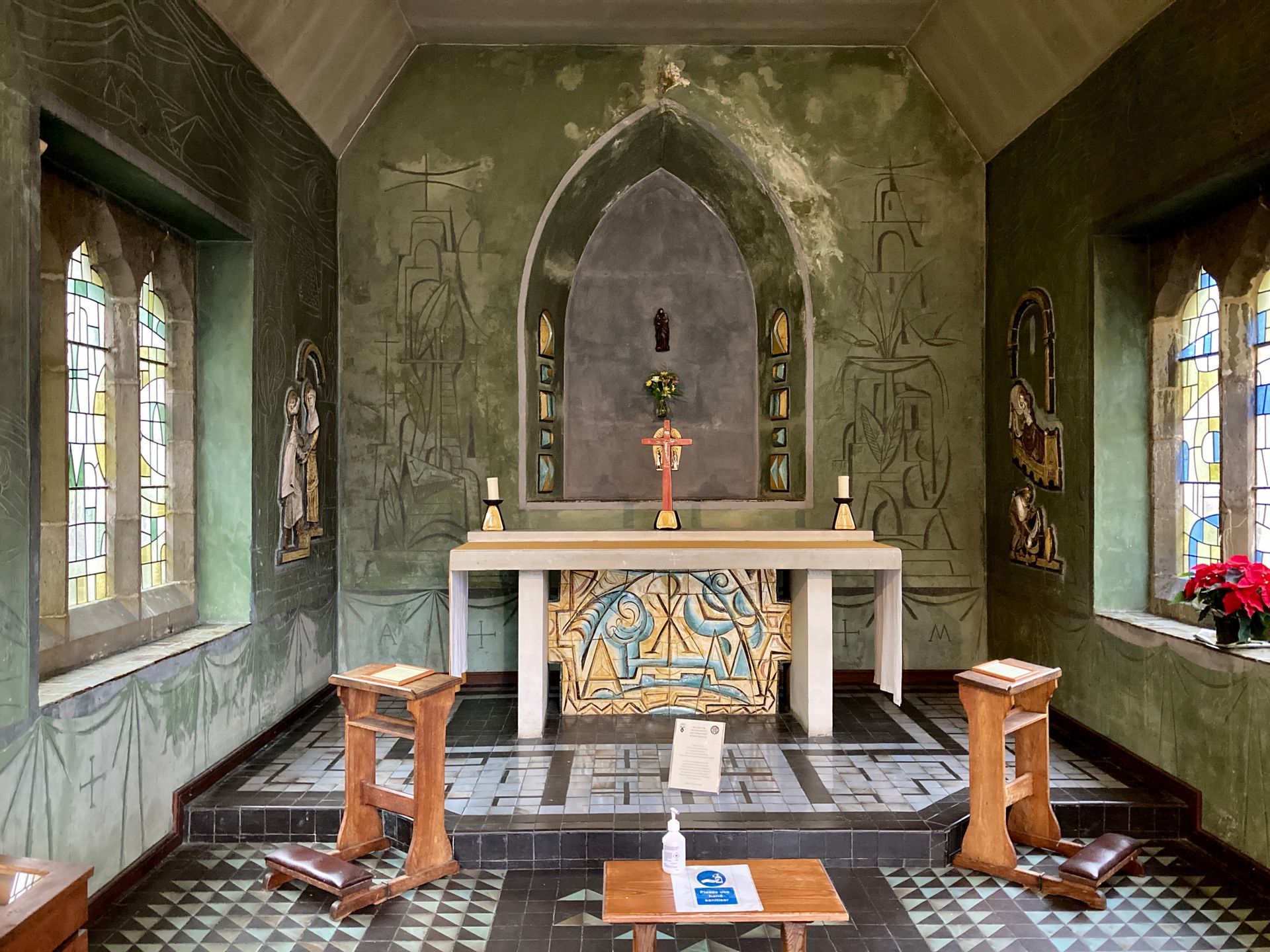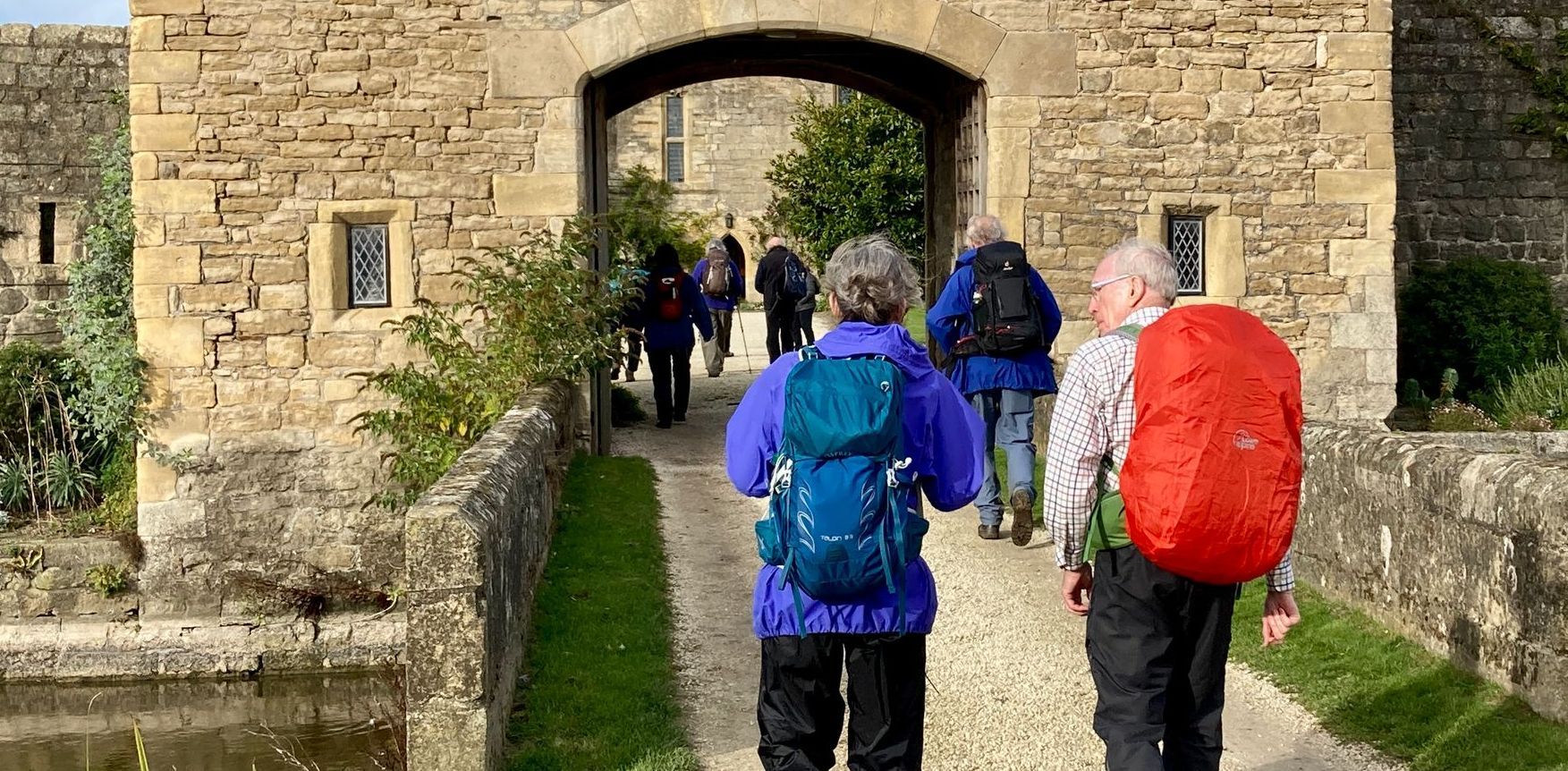The Becket Way
A Pilgrim Way in the Archdiocese of Southwark from Anglican Cathedral of St Saviour & St Marie Overie to the Shrine of Our Lady of Mount Carmel & St Simon Stock at Aylesford Priory
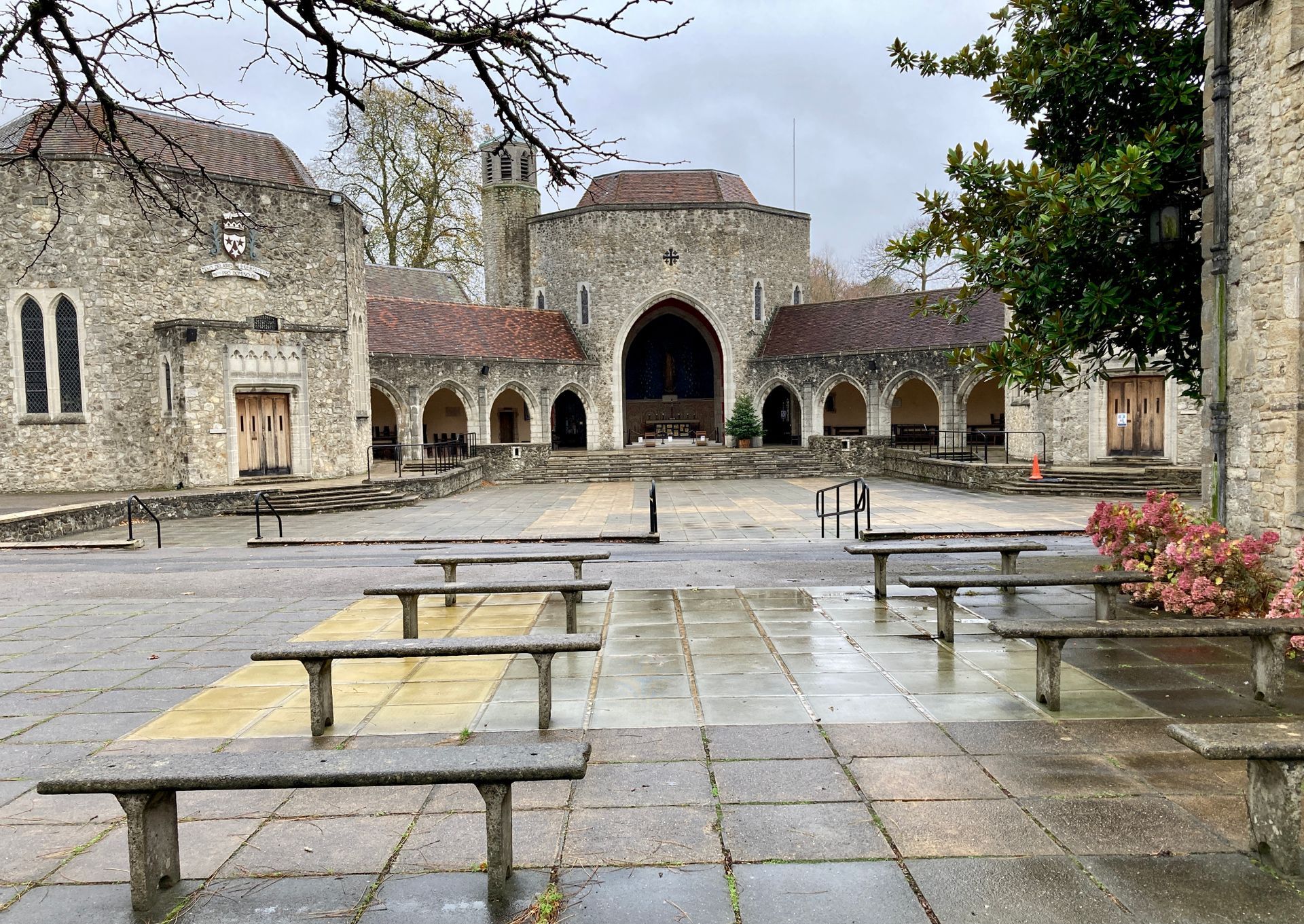
Aylesford Priory
About the route
Thomas Becket was an English nobleman who served as Lord Chancellor from 1155 to 1162, and then as Archbishop of Canterbury from 1162 until 1170. He came into conflict with Henry II over the rights and privileges of the Church and was murdered by followers of the King in Canterbury Cathedral. He was canonised by Pope Alexander III soon after his death.
The Becket Way forms the second section of the Southwark Pilgrim Way from St George's Cathedral in Southwark, London to shrines at Aylesford, Faversham, Canterbury and Ramsgate. All the information needed can be in in Cicerone's excellent guide written by Leigh Hatts which covers the Becket Way from London to Aylesbury as well as the Pilgrims' Way from Winchester and on to Canterbury. A link can be found in the Outer Way tab below. Please see the other Southwark pages for the first and third sections.
The Pilgrims’ Way from Winchester to Canterbury was ‘re-discovered’ by Hillaire Belloc at the turn of the last century and recorded in his book The Old Road. The Becket Way from Southwark to Canterbury is an established alternative route which joins the main Pilgrims Way at Kemsing. It is called the Becket Way because it is believed that this is the journey that Becket himself made to and from London.
You can find out more about the Way and download the GPX file by clicking on the LEARN MORE tab in the
interactive map below
Guidance
You can use the tabs in this section to find the information you need for your pilgrimage.
The Outer Way provides practical advice about the route and links to the Cicerone guidebook to the Becket Way.
The Inner Way describes the spiritual highlights.
Using the button below you can download details of the inner and outer ways
The Cicerone Guide to the Pilgrims Way provides walking guidance and more background to the Becket Way as well as the route from Winchester.
Stages: route, food & drink, accommodation and public transport
From Southwark Anglican Cathedral Becket's Way leads out of London to the southeast by the ruins of Lesnes Abbey, before reaching the River Thames. After passing through Erith the Way reaches the River Darenth and then the Church of St Anselm in Dartford.
The route follows the River Darenth south through quiet country to reach Otford and then turns east to reach the village of Kemsing. Here the Becket Way joins the main Pilgrims' Way and the route continues to reach the River Medway at Halling. After crossing the River the Way leads south to reach the Shrine at Aylesford Priory.
All the information needed can be in in Cicerone's excellent guide written by Leigh Hatts which covers the Becket Way from London to Aylesbury as well as the Pilgrims' Way from Winchester and on to Canterbury.
Pilgrim people and places
Thomas Becket, also known as Saint Thomas of Canterbury, was an English nobleman who served as Lord Chancellor from 1155 to 1162, and then as Archbishop of Canterbury from 1162 until his murder in 1170. He came into conflict with Henry II, King of England, over the rights and privileges of the Church. Henry uttered words which were interpreted as by his men as a request to murder Becket and four knights assassinated Becket in Canterbury Cathedral.
Soon after his death, Becket was canonised by Pope Alexander III and a cult developed across Europe. Amidst the Revolt of 1173–74, Henry humbled himself in public penance at Becket's tomb. The assassins travelled to Rome to seek forgiveness from the Pope who ordered them to serve as knights in the Holy Lands for 14 years.
Becket’s fame spread and pilgrimage to his tomb became popular. In 1538 the shrine was destroyed on the orders of Henry VIII during the Dissolution of the Monasteries. He ordered Becket's bones to be destroyed and all mention of his name obliterated.
The Anglican Cathedral of St Saviour & St Marie Overie
A verbal tradition suggests that the first Christian establishment was a community of nuns in the 7th century, but the first written reference is the mention of a 'minster' in the Domesday Book of 1086. In 1106 the Church was 're-founded' by two Norman knights as a priory, whose members, known as ‘canons,’ lived according to the rule of St Augustine of Hippo. The Church became known as St Mary Overie ('over the river').
On 11th December 1170 Archbishop Thomas Becket preached his final sermon in London at the Priory before his martyrdom in Canterbury Cathedral on 29 December. The canons built a hospital dedicated to St Thomas Becket of Canterbury and the pilgrimage route to his shrine in Canterbury began at Southwark. The magnificent wooden screen was erected in 1520 although the carvings are from much later. One commemorates Becket.
At the Dissolution of the Monasteries in 1539, the canons were forced out, although they continued to live in buildings north of the church. The Church became the property of Henry VIII and was re-named St Saviour's. In the late 19th Century it was proposed that a new diocese should be created for the population of South London, and a new nave was built. St Saviour's Church became Southwark Cathedral in 1905.
Lesnes Abbey was founded by Richard de Luci, Chief Justiciar of England, in 1178 as penance for his role in the murder of Thomas Becket. The Abbey owned a large estate including extensive marshland, but the cost of draining the marsh and maintaining river embankments meant that the monastic community was never a large or wealthy.
The Abbey was closed by Cardinal Wolsey in 1525, predating the Dissolution of the Monasteries in 1536. The Abbey ruins and surrounding gardens remain. There is a café and toilets.
The Carmelite Order arrived in Kent in 1242. They were forced from their priory at Aylesford during the Dissolution of the Monasteries in 1538, and the buildings were put to various uses over the centuries. In 1949 the Carmelites returned after an absence of over 400 years. They restored the tranquil gardens, built chapels and adorned them with fine ceramic artworks. Father Malachy Lynch who spearheaded the reconstruction, described the Friars as a “prayer in stone”.
The shrine at Aylesford is dedicated to Our Lady, and there are beautiful chapels dedicated to the saints of Carmel, notably St Simon Stock. Stock was an early Prior General of the Order who experienced a vision of Our Lady, perhaps at Aylesford. In the vison she gave him a scapula, two small pieces of brown cloth, joined together with cord, which is won over the shoulders. The scapular developed in the Renaissance as a miniature religious habit and became popular amongst lay people who want to have a discreet but visible sign of identifying with the Carmelite way of life. Stock died in 1261 and was buried in Bordeaux, but in 1951 some of his relics were brought to Aylesford and can be venerated in the Relic Chapel.
Prayer for Courage
Father, you confirm true faith with the crown of martyrdom.
May the prayers and example of St Thomas Becket give us the courage to proclaim our faith by the witness of our lives.
Through our Lord Jesus Christ, your Son, who lives and reigns with you in the unity of the Holy Spirit, one God, for ever and ever.
Amen.
St Thomas Becket, pray for us
ABOUT THE ARCHDIOCESE OF SOUTHWARK
In 1850, Pope Pius IX restored the Catholic hierarchy in England and Wales and created thirteen dioceses. As part of this restoration, the Diocese of Southwark was established covering much of southern England - London south of the Thames, Surrey, Kent, Sussex, Berkshire, southern Oxfordshire, Hampshire and the Channel Islands.
By the later 1800s, it had become clear that the Diocese of Southwark was too large and so in 1882, Pope Leo XIII created the Diocese of Portsmouth from the Diocese of Southwark. Hampshire, South Oxfordshire, Berkshire, and the Channel Islands became part of the new Diocese.
On 28th May 1965, Pope Paul VI created a new Diocese of Arundel & Brighton from part of the Diocese of Southwark. East and West Sussex and Surrey (outside of the London boroughs) became part of this new Diocese. On the same date, the Diocese of Southwark was elevated to a Metropolitan See and its bishops became Archbishops.
